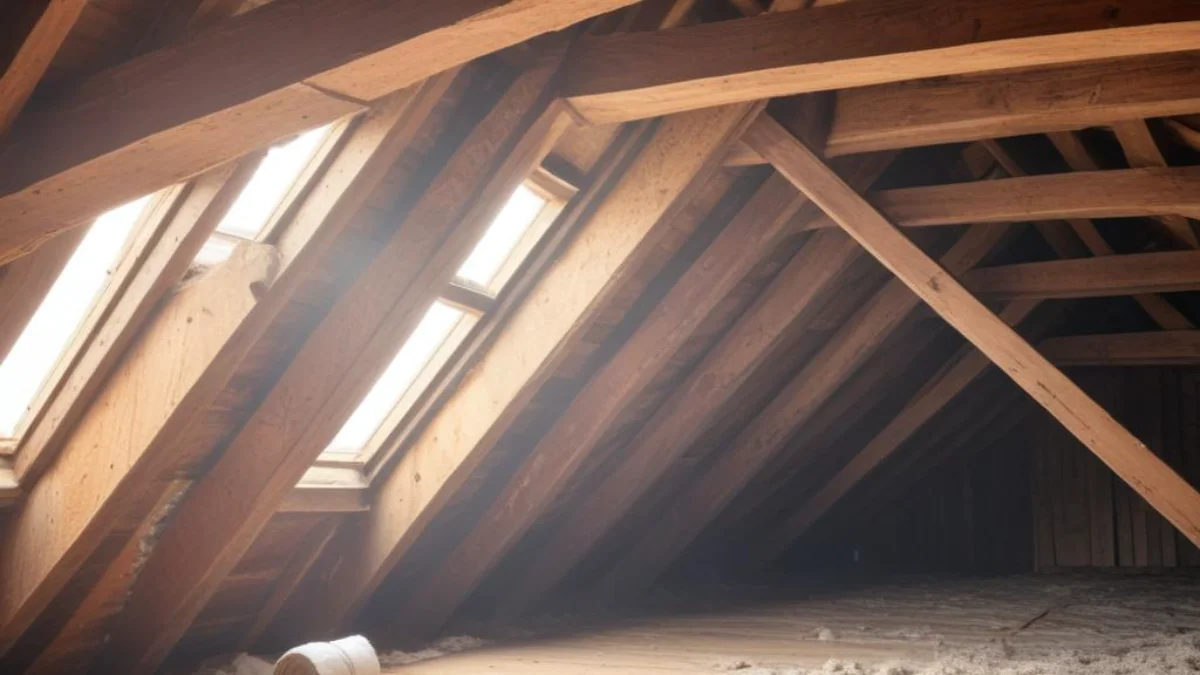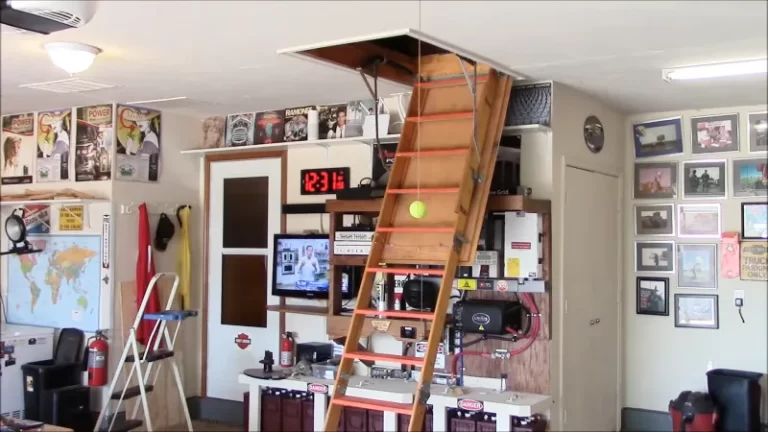Attic Smells in Summer? Here’s Why & How to Fix It Fast
That musty, unpleasant odor wafting down from your attic on a hot summer day is more than just a nuisance. It’s a sign that something is wrong. Many homeowners ignore these smells, but they can indicate serious issues that could affect your home’s air quality and structural integrity.
This comprehensive guide will help you identify the source of those mysterious attic smells and provide actionable steps to eliminate them for good. We’ll explore the common culprits, from trapped heat and humidity to pests and mold, ensuring you can reclaim your home’s freshness.
You'll Learn About
Why Your Attic Smells So Bad in the Summer
The primary reason attic odors become so pungent in the summer is simple: heat and humidity. Your attic can reach temperatures exceeding 150°F (65°C) on a hot day. This intense heat acts like an oven, amplifying and “baking” any existing smells, which then find their way into your living spaces through gaps and cracks.
The Overheating Effect: How Heat Intensifies Odors
Heat accelerates the breakdown of organic materials and the off-gassing of chemicals found in building materials. That faint, musty smell from old insulation or wood can become a powerful, room-filling stench when superheated. This process is known as volatilization, where substances turn into vapor more readily at higher temperatures.
Think of it like a car that’s been sitting in the sun. The “new car smell” is actually the off-gassing of plastics and adhesives, a smell that is much stronger on a hot day. Your attic experiences the same phenomenon, but with a much less pleasant variety of odors.
Humidity and Moisture: The Breeding Ground for Smells
Summer often brings high humidity, and this moisture is a major contributor to attic odors. Moisture can enter the attic through roof leaks, improper ventilation, or condensation. This creates the perfect environment for mold and mildew to thrive, which are notorious for producing a musty, earthy smell.
Even without a leak, humid air can be absorbed by porous materials like wood, insulation, and stored cardboard boxes. When these materials become damp, they begin to decompose and release foul odors, contributing to the overall problem.
Common Sources of Summer Attic Smells
To effectively eliminate the smell, you first need to identify its source. Attic odors can stem from a variety of issues, each requiring a different approach. Let’s break down the most common culprits.
1. Mold and Mildew Growth
The number one cause of musty attic smells is mold and mildew. These fungi flourish in damp, dark, and poorly ventilated spaces. A small roof leak or condensation from your HVAC system can provide all the moisture needed for a colony to take hold on wood rafters, insulation, or drywall.
The smell is often described as earthy, musty, or similar to damp socks. If you notice this particular scent, a thorough inspection for visible mold growth or signs of water damage is your first priority.

2. Pests and Unwanted Guests
Your attic can be a cozy home for rodents, birds, squirrels, and insects. Unfortunately, these pests leave behind droppings, urine, and nesting materials that create powerful, unpleasant odors. The heat of summer intensifies the ammonia smell from urine and the decomposition of droppings.
If an animal unfortunately perishes in the attic, the resulting smell of decay is unmistakable and overwhelming. If you hear scratching or scurrying noises, it’s a strong indication that you have a pest problem that needs immediate attention.
3. Overheated Building Materials
Many materials used to build your home can release odors when subjected to extreme heat. This is known as off-gassing. Old insulation, roofing tar, asphalt shingles, and even the wood framing itself can emit a chemical or burnt smell when baked by the summer sun.
If your attic smells like burning plastic, hot tar, or chemicals, it’s likely due to the building materials overheating. This is a clear sign that your attic ventilation is inadequate.
4. Trapped Household Odors and Vents
Believe it or not, some attic smells actually originate from inside your house. Bathroom and kitchen exhaust fans should always be vented directly outside. Unfortunately, in some homes, these vents are improperly terminated in the attic.
This means all the moisture, cooking smells, and other odors from your living space are being pumped directly into your attic. This not only creates a strange mix of smells but also adds significant moisture, which can lead to mold and rot. You might also notice issues with your furnace; sometimes, what seems like steam coming out of the furnace is actually a venting issue that could affect attic air.
Your Step-by-Step Plan to Eliminate Attic Odors
Now that you understand the potential causes, it’s time to take action. Follow these steps to diagnose and solve your attic smell problem for good. This systematic approach will help you pinpoint the issue and apply the correct solution.
Step 1: Conduct a Thorough Attic Inspection
Your first step is to carefully inspect your attic. Safety is paramount. Wait for a cooler part of the day, wear a mask (like an N95 respirator), gloves, and long sleeves, and use a bright flashlight. Look for obvious signs of trouble.
Check for water stains on the underside of the roof deck, around vents, and on the insulation. Look for visible mold growth, which can appear as black, white, or green patches. Also, search for any signs of pests, such as droppings, nests, or chewed wires.
Step 2: Address Any Moisture or Leak Issues
If you find any evidence of water intrusion, this must be your top priority. You cannot solve an odor problem without first solving the moisture problem. Identify the source of the leak, which could be damaged shingles, flashing around chimneys or vents, or ice dams from the previous winter.
Once the leak is repaired, any water-damaged materials, especially insulation and drywall, must be removed and replaced. Simply drying them out is not enough, as mold spores will remain and can become active again with future humidity.
Step 3: Eradicate Pests and Seal Entry Points
If pests are the culprits, you’ll need to remove them and clean up the mess they left behind. This may require professional help from a pest control company. Once the animals are gone, all droppings and nesting materials must be removed.
After cleaning, you must find and seal all entry points to prevent them from returning. Look for gaps around pipes, vents, and where the roof meets the walls. Use steel wool and caulk to seal these openings effectively.
Step 4: Improve Attic Ventilation
Proper ventilation is the most critical long-term solution for preventing attic smells. An attic needs a continuous flow of air to exhaust heat and moisture. A well-ventilated attic should stay within 10-20 degrees of the outside temperature, not become a superheated oven.
Ensure your soffit vents (intake) and ridge or gable vents (exhaust) are not blocked by insulation or debris. In many cases, adding a powered attic fan or a solar-powered vent can dramatically improve air circulation and keep your attic cooler and drier.
| Ventilation Type | How It Works | Best For |
|---|---|---|
| Soffit Vents | Located under the eaves, they draw in cooler, fresh air from outside. | Essential intake for most passive ventilation systems. |
| Ridge Vents | Run along the peak of the roof, allowing hot air to escape naturally. | Highly effective and aesthetically pleasing exhaust solution. |
| Gable Vents | Installed on the exterior walls at the top of the gable. | Common in older homes; works best with soffit vents. |
| Powered Attic Fan | An electric fan that actively pulls hot air out of the attic. | Homes in very hot climates or with complex roof designs. |
Step 5: Check and Correct Venting
Inspect your attic to confirm where your bathroom and kitchen fans are venting. You should see a duct running from the fan to a vent on the roof or through a soffit. If a duct simply ends in the open attic space, it must be corrected immediately.
Venting this moisture-laden air directly outside is a simple fix that can have a huge impact on attic humidity and odor. Proper venting is a crucial component of home maintenance.
Advanced Solutions for Stubborn Attic Smells
If you’ve addressed moisture, pests, and ventilation but a lingering odor remains, you may need to take additional steps. These solutions tackle the deeply embedded smells that have soaked into the attic’s structure.
Deodorizing and Cleaning
For persistent musty or animal smells, professional cleaning and deodorizing may be necessary. This can involve using an ozone generator (which should only be operated by a professional in an unoccupied home) or applying odor-encapsulating paint to the wood surfaces.
These products don’t just mask the smell; they create a barrier that permanently seals in the odor-causing molecules. This is often the final step after a major mold remediation or pest infestation cleanup.
Upgrading Your Insulation
Old, degraded, or compressed insulation can hold onto odors for years. If your insulation is decades old, it may be time for a replacement. Removing the old material and installing new, clean insulation can make a massive difference in both smell and your home’s energy efficiency.
When replacing insulation, consider air sealing the attic floor first. This involves using foam sealant to close up all the small gaps and cracks between your attic and the living space below, preventing odors from seeping down. Proper insulation is key, and it’s even important in smaller spaces; learning about closet insulation can provide insights into how heat and air transfer affect your entire home.
When to Call a Professional
While many of these steps are DIY-friendly, some situations require professional expertise. If you suspect a major mold problem, have a persistent pest infestation, or need electrical work for a fan, it’s best to call in a licensed contractor.
Similarly, if you’re dealing with complex systems, like noticing your radon fan is loud when cold, it’s often a sign that a specialist’s diagnosis is needed for related home systems that could impact attic conditions.
Conclusion: A Fresh Home Starts with a Healthy Attic
That unpleasant attic smell in the summer is your home’s way of telling you there’s a problem. By systematically inspecting for moisture, pests, and poor ventilation, you can get to the root of the issue. Do not ignore these warning signs.
Addressing the underlying cause not only eliminates the bad odor but also protects your home from mold, rot, and pest damage. A clean, dry, and well-ventilated attic is essential for good indoor air quality and a comfortable living environment all year round.

